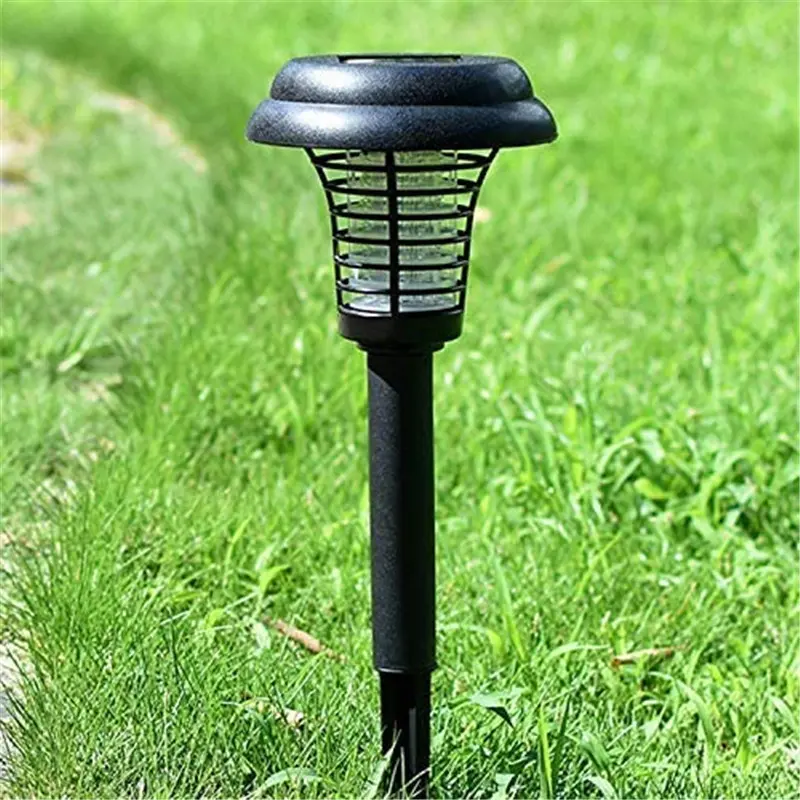Solar lawn lamp is a kind of green energy lamp, which has the characteristics of safety, energy saving, environmental protection and convenient installation. Waterproof Solar lawn lamp is mainly composed of light source, controller, battery, solar cell module and lamp body and other components. Under the light irradiation, the electric energy is stored in the battery through the solar cell, and the electric energy of the battery is sent to the load LED through the controller when there is no light. It is suitable for beautifying lighting embellishment of green grass in residential communities and beautifying lawn of parks.
A complete set of solar lawn lamp system includes: light source, controller, battery, solar cell components and lamp body.
When sunlight shines on the solar cell during the day, the solar cell converts the light energy into electrical energy and stores the electrical energy in the battery through the control circuit. After dark, the electric energy in the battery supplies power to the LED light source of the lawn lamp through the control circuit. When it was dawn the next morning, the battery stopped supplying power to the light source, the solar lawn lights went out, and the solar cells continued to charge the battery. The controller is composed of a single-chip microcomputer and a sensor, and controls the opening and closing of the light source part through the collection and judgment of the optical signal. The lamp body mainly plays the role of system protection and decoration during the day to ensure the normal operation of the system. Among them, the light source, controller and battery are the key to determine the performance of the lawn lamp system. The system pivot diagram is shown on the right.
Solar battery
1. Type
Solar cells convert solar energy into electrical energy. There are three types of solar cells that are more practical: monocrystalline silicon, polycrystalline silicon, and amorphous silicon.
(1) The performance parameters of monocrystalline silicon solar cells are relatively stable, and are suitable for use in southern regions where there are many rainy days and not enough sunlight.
(2) The production process of polycrystalline silicon solar cells is relatively simple, and the price is lower than that of monocrystalline silicon. It is suitable for use in eastern and western regions with sufficient sunlight and good sunshine.
(3) Amorphous silicon solar cells have relatively low requirements on sunlight conditions, and are suitable for use in places where outdoor sunlight is insufficient.
2. Working voltage
The working voltage of the solar cell is 1.5 times the voltage of the matching battery to ensure normal charging of the battery. For example, 4.0~5.4V solar cells are needed to charge 3.6V batteries; 8~9V solar cells are needed to charge 6V batteries; 15~18V solar cells are needed to charge 12V batteries.
3. Output power
The output power per unit area of the solar cell is about 127 Wp/m2. A solar cell is generally composed of multiple solar unit cells connected in series, and its capacity depends on the total power consumed by the light source, line transmission components, and local solar radiation energy. The output power of the solar battery pack should exceed 3~5 times of the power of the light source, and it should be more than (3~4) times in areas with abundant light and short light-on time; otherwise, it should be more than (4~5) times.
storage battery
The battery stores the electric energy from the solar panels when there is light, and releases it when lighting is needed at night.
1. Type
(1) Lead-acid (CS) battery: It is used for low-temperature high-rate discharge and low capacity, and is used by most solar street lights. The seal is maintenance-free and the price is low. However, attention should be paid to prevent lead-acid pollution and should be phased out.
(2) Nickel-cadmium (Ni-Cd) storage battery: high discharge rate, good low-temperature performance, long cycle life, small system use, but care should be taken to prevent cadmium pollution.
(3) Nickel-metal hydride (Ni-H) battery: high-rate discharge, good low-temperature performance, cheap price, no pollution, and is a green battery. Can be used in small systems, this product should be strongly advocated. There are three types of lead-acid maintenance-free batteries, ordinary lead-acid batteries and alkaline nickel-cadmium batteries that are widely used.
2. Battery connection
When connecting in parallel, it is necessary to consider the unbalanced effect between the individual batteries, and the number of parallel groups should not exceed four groups. Pay attention to the anti-theft problem of the battery during installation.
Post time: Apr-04-2023
 fannie@nbtorch.com
fannie@nbtorch.com +0086-0574-28909873
+0086-0574-28909873






